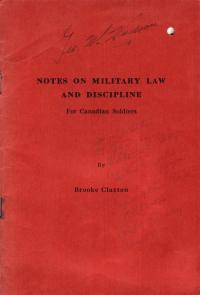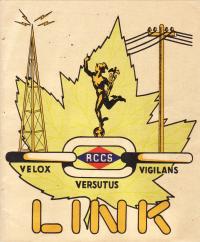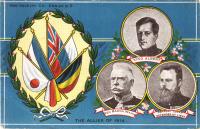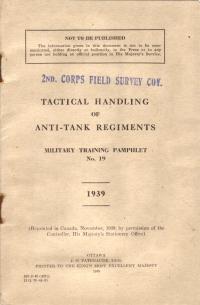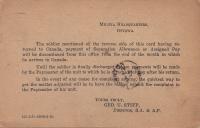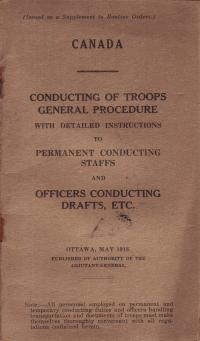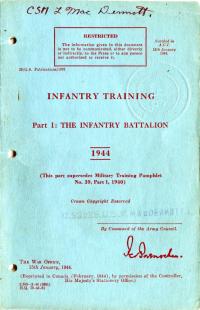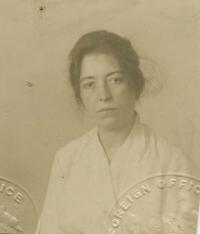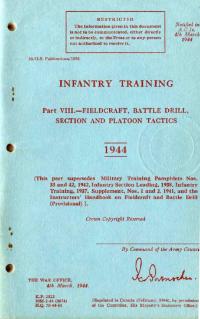Fighting
Notes on Military Law
First World War veteran and later cabinet minister Brooke Claxton originally prepared these notes in the form of lectures for the McGill University Contingent of the Canadian Officers' Training Corps. They cover everything from courts martial to morale and efficiency.
News for signallers
Printed after the end of the Second World War in Europe, this issue covered demobilization policy, sports news, entertainment, and an exhortation to vote in the 1945 federal election.
Don't be neutral!
Did Canadians really enlist in the First World War to help Belgium? The Hamilton Recruiting League obviously thought so, and used Belgium as the subject of one of its recruiting cards.
Lessons in anti-tank warfare
Written in 1939, this training pamphlet was distributed before the British or Canadian army had much experience with modern anti-tank warfare.
"Assigned Pay will be discontinued"
One of the few drawbacks of returning to Canada after the First World War was the end of the separation allowance and assigned pay that had been remitted to one's next of kin.
Conducting of Troops
The complexities involved in moving large numbers of soldiers in an orderly fashion are outlined in this booklet, which was printed not long before the end of the First World War.
Infantry Training, Part I: The Infantry Battalion
The UK War Office produced and issued a series of short training manuals used by both the British and Canadian armies. Collectively, these manuals established the doctrine, or tactical procedures, for both armies throughout the war. This 1944 manual concerns the operation of the infantry battalion.
A nurse and her patients
British nurse Sarah Arnold kept a diary while she worked at Royal Berkshire Hospital in Reading during the First World War but instead of writing in it herself, she asked her patients (including some wounded Canadian soldiers) to write of their experiences. After the war, Arnold married John Bridgman of Aberdeen, Saskatchewan, one of the soldiers she had nursed.
Infantry Training, Part VII, Section and Platoon Tactics
The UK War Office produced and issued a series of short training manuals used by both the British and Canadian armies. Collectively, these manuals established the doctrine, or tactical procedures, for both armies throughout the war. This 1944 manual on the tactics of small units reflected the experience gained in North Africa and Italy.
The Canadian War
This masthead of this First World War magazine told readers everything they needed to know about its editorial position: "Patriotism - Union - Victory ; Written and Edited Without Remuneration ; Devoted Entirely to Propaganda for the War."

